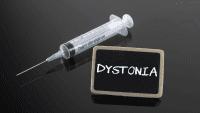System-wide, evidence-based practice is the solution.
The 2018 Institute for Safe Medication Practices (ISMP) survey uncovered many concerns about how nurses are diluting I.V. push medications. A common unsafe practice is unnecessary dilution of adult I.V. push medications. Another issue is dilution or reconstitution of I.V. push medication using a prefilled 0.9% sodium chloride (saline) flush syringe.
Nurses are making more work for themselves by diluting drugs unnecessarily, and the practice doesn’t provide value to patients; instead, it creates contamination and medication error risks. In addition, facilities are paying a premium price for prefilled syringes. So why are nurses diluting?
Nurses believe that dilution is good for patients. In the survey, the primary factors that influenced a decision to further dilute adult I.V. push medications were associated with the desire to administer the drug slowly (94%), avoid patient discomfort (70%), reduce the risk of extravasation (33%), and measure small-volume doses accurately (25%). Nurses also may believe they can monitor patient response more efficiently if they dilute the medication.
However, all of these concerns can be addressed by using best practices, which include ensuring the I.V. line is functional and following the manufacturer’s instructions for diluting and administering I.V. push medications.
Concerns about flush syringes
The manufacturers of prefilled 0.9% sodium chloride flush syringes state that their products aren’t designed for diluting medications. Despite this, 81% of ISMP survey participants (mostly nurses) reported that they’ve used a flush syringe to reconstitute or dilute an I.V. push medication.
There are many concerns about using flush syringes for dilution, including the possibility of interaction with the medication being diluted. In addition, they may not be guaranteed to be sterile if the plunger is pulled past a certain point. These syringes also are not designed to measure doses accurately. Some of these syringes are labeled “for flush only.” Drawing a medication into a syringe labeled for something else creates confusion and a serious safety issue.
Reducing dilution risks
Ideally, all medications should be provided to nursing units as ready-to-administer syringes to reduce confusion about dilution and the associated risks. This goal isn’t yet realistic in all settings because ready-to-administer I.V. drugs may not always be available and may cost more than vials that need to be reconstituted. However, all drugs that aren’t available in a manufacturer-prepared, ready-to-administer syringe need to be reconstituted and diluted under a flow hood in the pharmacy. These specialty hoods provide a controlled setting that reduces contamination risk.
If drugs must be reconstituted or diluted by a nurse on the unit, the pharmacist should send clear instructions with the medication. And the lines of communication must be supported so that nurses are comfortable calling pharmacists with concerns and questions.
Creating an evidence-based practice culture
An organization’s practice culture can be at the root of unsafe I.V. push practices. Nurses may believe they have to dilute medications in ready-to-administer syringes because the practice was learned as a part of the culture that spreads from one nurse to another. And different practice cultures in different units can exist in the same organization.
Create a structure that keeps nursing practice safe and on the same page. Nurses need system-wide, evidence-based policies and educational processes to learn which medications shouldn’t be diluted and the safest way to dilute those that should be. This includes providing dilution policies and drug-specific information. Educational programs also need to stress that the best way to reduce patient discomfort and risks is by following manufacturer’s instructions and evidence-based practice.
Nurses like to set their own practice, so establish practice and policy at the nursing level, while accessing pharmacists’ expertise.
Steven Jarrett is the medication safety officer in the quality division for Atrium Health in Charlotte, North Carolina. Catherine Spader is an author and healthcare writer based in Littleton, Colorado.
ant4-Fresenius-IV-Push-325a


















